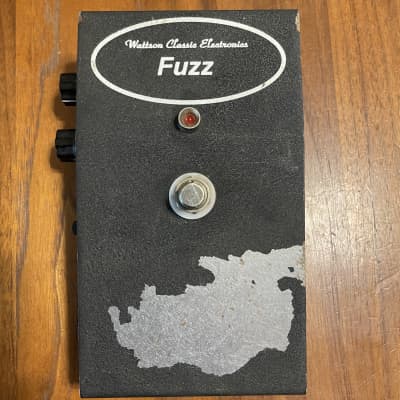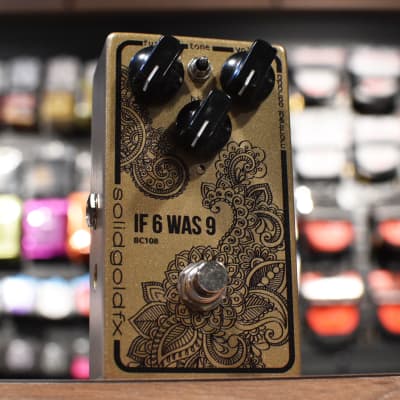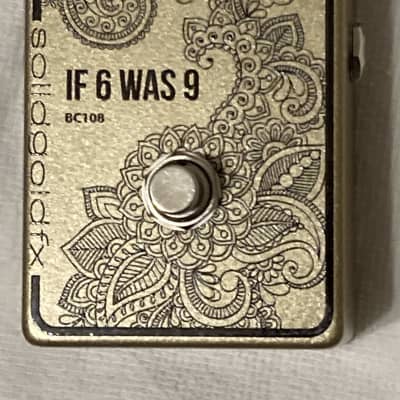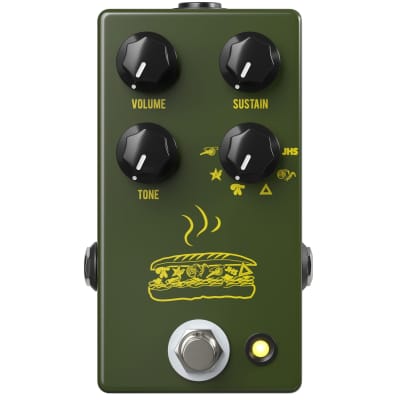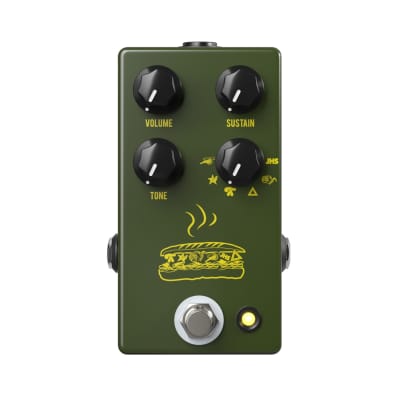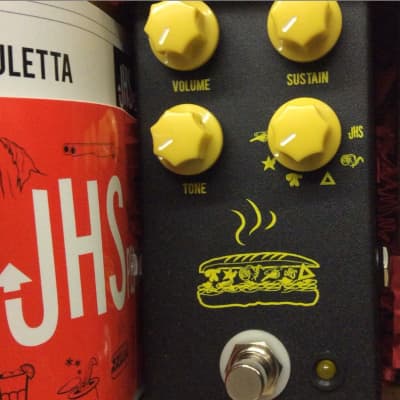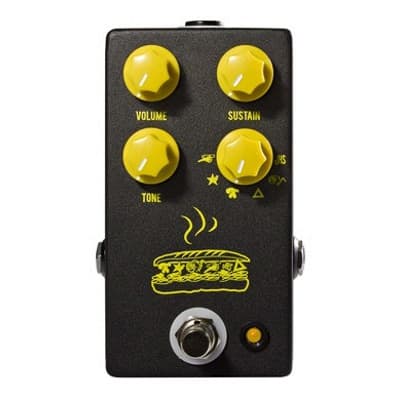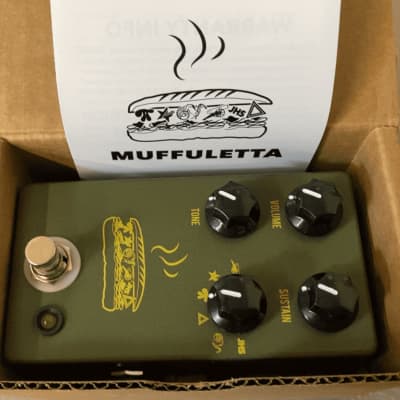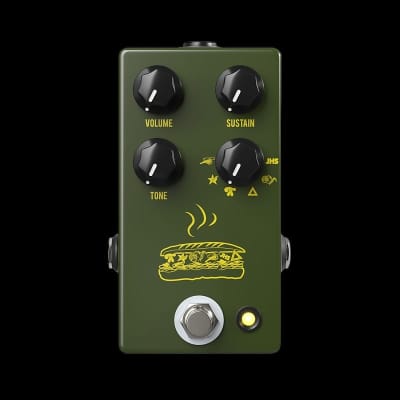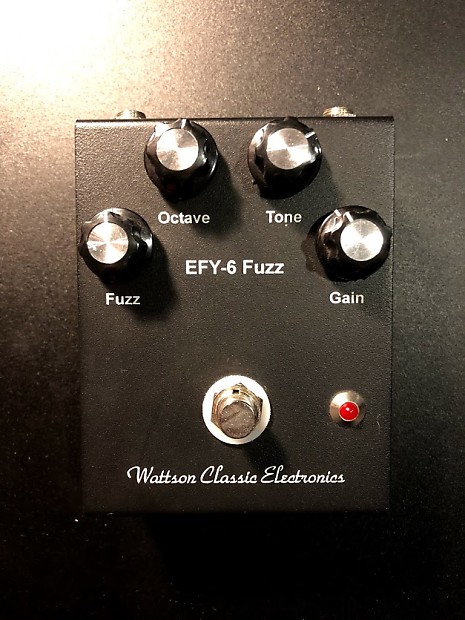The Wattson EFY-6 Fuzz is an enhanced version of the circuit used in the , based on requests Wattson received since they began building the FY-6 more than five years ago.
The most visible differences are that the Wattson EFY-6 Fuzz has four knobs, whereas the has two knobs just like the original Shin-ei FY-6 pedal it's modeled after. Two of the four knobs are directly inherited from the FY-6. The FY-6 Expander knob has been renamed Fuzz, and the FY-6 Balance knob has been renamed Gain. These names more accurately reflect the function of these controls.
The original FY-6 pedal includes a special 3-transistor circuit that doubles the frequency of the guitar signal before sending it into the clipping and filtering circuits, effectively raising the tone by a full octave. For this reason, the FY-6 belongs to a class of effects known as "octave fuzz" pedals. The clipping circuit grinds the signal into a thick fuzzy soup, so you don't really hear the octave step up directly. What you do hear are the additional high frequency harmonics that the octave circuit adds. These harmonics are especially noticeable when you play on the neck pickup above the 12th fret. In this range the harmonics are so intense that it almost sounds like a synthesizer.
Unfortunately, while the octave step up adds a lot of character to individual notes, it can make chords of more than two or three notes sound like mush. Because of this, one of the things FY-6 customers have frequently asked for is a switch that can turn the octave circuit off, taming the high frequency harmonics and allowing chords to sound a bit more organic. Wattson went a step beyond and provided an Octave knob. The Octave knob controls the level of half of the cycles coming out of the octave circuit. When the Octave knob is fully cranked then the EFY-6 sounds just like the original FY-6. When you back off the Octave knob then the bottom end begins to sound more full, the high end has less bite, and chords sound less washed out. Turning the Octave knob all the way down completely eliminates the octave effect, and only the original guitar frequency goes through the clipping and filtering circuits. Even though the frequency is the same, the waveshape is still substantially changed by the other half of the octave circuit, so the guitar signal still has plenty of character.
The original FY-6 had a two position switch called Tone. Position "2" of the Tone switch added a mid-scoop filter after the clipping circuit, while position "1" selected the unfiltered signal. One request Wattson received frequently was to move the Tone switch to a footswitch. Another request was to eliminate the switch entirely, and provide a knob that could be used to blend between the two tones. Wattson went with the latter suggestion. When the Tone knob is turned all the way down then the EFY-6 sounds like an FY-6 with the Tone switch in position "1". When the Tone knob is turned all the way up then the EFY-6 sounds like an FY-6 with the Tone switch in position "2". In between the two limits, the Tone knob produces a blend of the two tones.
Here's a brief listing of other additional features they've added:
- More gain! The EFY-6 provides up to four times as much gain as the original FY-6.
- All jacks are on the back! There is nothing mounted on the sides of the EFY-6 enclosure, saving precious horizontal space on your pedalboard.
- Pedal board friendly size! The EFY-6 has the same 'footprint' as a Hammond 1590BB aluminum enclosure, which is commonly used by many boutique pedal builders, so it will take up the same square area on your pedalboard as many other common boutique pedals. However, we still use a top quality 16 gauge steel enclosure with a finely textured powder coat finish for rugged durability.
- Lower price! Wattson cut the cost of producing the EFY-6 by using a simpler and less expensive enclosure design, eliminating the chassis wiring by mounting all of the components on the circuit board (this saves an hour of labor on each pedal), and dropping some of the more expensive components like the battery drawer (you have to open the pedal to install or change the battery). However, They didn't ship the work off to Asia in order to save money. Their blank PCB's are made in Sunnyvale, California, the steel enclosures are made in Sparks, Nevada, and the circuit boards are soldered and our pedals are assembled and tested in their own shop in Hayward, California.

